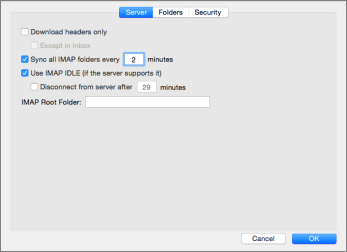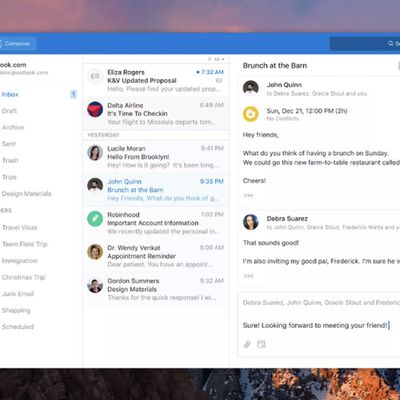

- #Outlook for mac 2017 open in browsers. 64 Bit#
- #Outlook for mac 2017 open in browsers. 32 bit#
- #Outlook for mac 2017 open in browsers. professional#
- #Outlook for mac 2017 open in browsers. windows#
That’s another reason why Outlook for Mac uses up so much disk space.

OST), Outlook for Mac saves messages and attachments in many different files.
#Outlook for mac 2017 open in browsers. windows#
Unlike Outlook for Windows (which has a single enormous data file. We used Disk Inventory X to look at the entire drive and see which folders took up the most space. Data is stored in Documents/Microsoft User Data then in ‘Identities’. Then drill down to /Data/ and three ‘Message’ folders: ~/Library/Group Containers/UBF8T346G9.Office/Outlook/Outlook 15 Profiles/Main Profile Outlook 2016 for Mac puts the data folders in the users Library folder We found a nifty and cheap tool to use HFS+ compression, but it’s disappeared. If you want to try HFS+ compression from the command line – check out here. The Apple supplied method is terminal command lines! That’s a right PITA and really strange for the usually user friendly Mac. Unfortunately, HFS+ compression isn’t easy to use. Note: macOS also has a feature called ‘Compress’ which is a different thing entirely. MacOS has a similar feature, HFS+ compression which has been available since the Snow Leopard release. The compression doesn’t save as much disk space as it once did because many file formats are now already compressed (e.g. It’s not used a lot on Windows computers now because hard drives have become a lot larger and cheaper. It’s easy to use and available on the Properties dialog for any file, folder or entire NTFS drive. NTFS Compress works seamlessly in the background. Windows users have a ‘Compress contents’ options to shrink the disk space used by files. Before you buy a new Mac or get a third-party drive upgrade, check out a somewhat hidden feature in the macOS – HFS+ compression. The result can be many gigabytes used up on a relatively small drive. In particular, the ability to only sync the most recent messages. Unfortunately, Outlook for Mac, even the latest Outlook 2016 doesn’t have some of the space saving options available to Office for Windows. Mac computers can have relatively small hard drives like 128GB or 265GB which Outlook 2016 for Mac can gobble up.
#Outlook for mac 2017 open in browsers. 32 bit#
Hopefully this quick easy fix will work for you and save the hassle downgrading to 32 bit or even reverting back to Office 2013.Outlook for Mac is a disk space hog but the macOS has a way to recover some of that.

This easy fix worked for us straight away however according to Microsoft forums some users suggest that after Outlook has been closed and reopened several times the problem comes back, although we have not experienced this yet! Untick “Reduce message size by removing format information not necessary to display the message” Navigate to the Mail section and scroll down to Message Format This isn’t a great solution and so until Microsoft release a fix we found a quick way of resolving this issue:
#Outlook for mac 2017 open in browsers. 64 Bit#
The particular problem seems to lie with the 64 bit version of Office and does not seem to have been reported on any 32 bit version causing some users to downgrade to 32 bit. Whilst displaying html content should not be difficult for an email application, many users with 2016 seem to be experiencing it (see here - ).
#Outlook for mac 2017 open in browsers. professional#
Having upgraded to Office 2016 Professional earlier this month I have come across a frustrating issue within Outlook – an email with html content is not displayed correctly, the alignment is all off and a horizontal scroll bar is displayed so you have to scroll right to see any content. UPDATE: Unfortunately this issue has returned after using Outlook for a while, however closing and reopening Outlook seems to fix it again (temporarily).


 0 kommentar(er)
0 kommentar(er)
